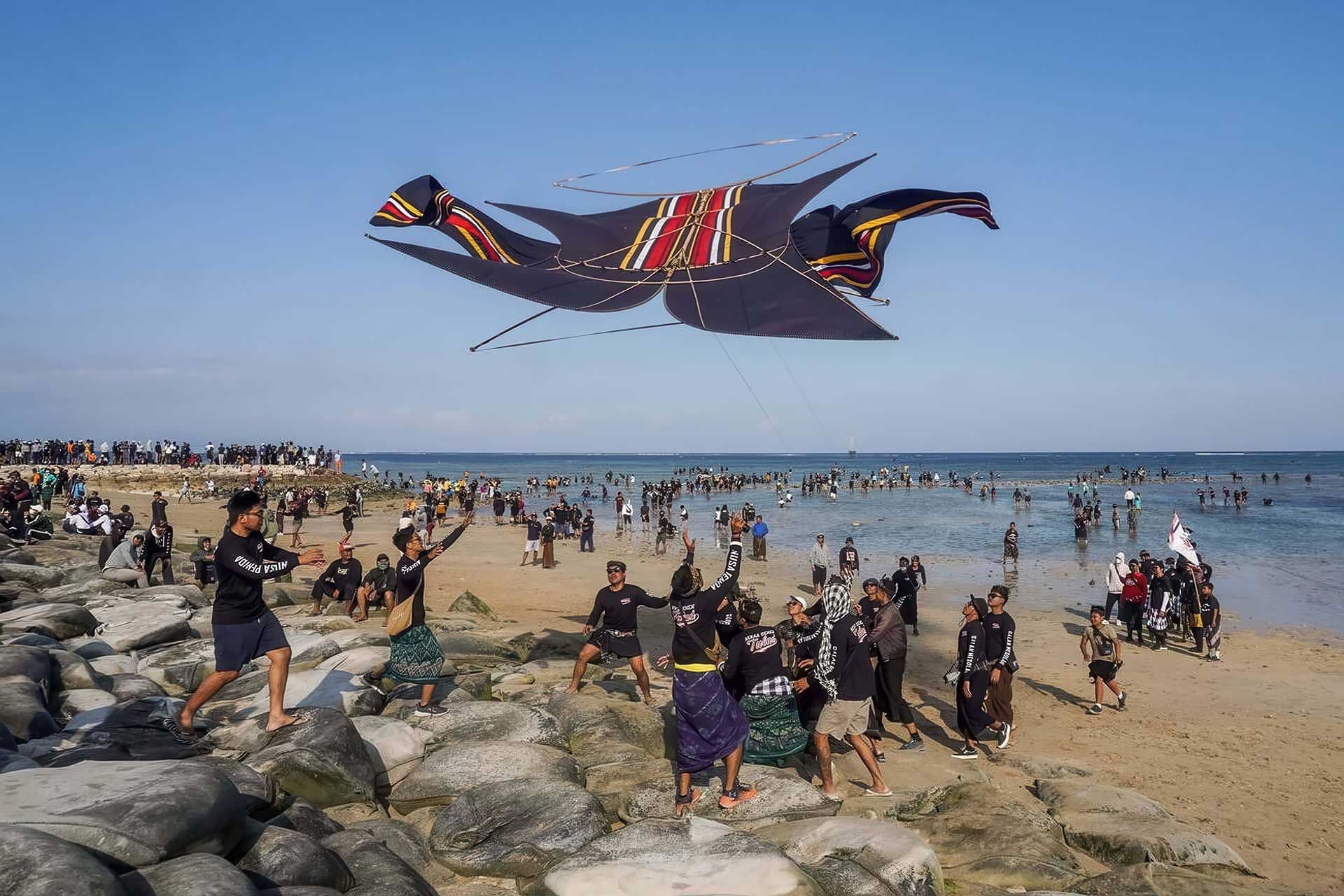Bali’s Kite Festival and the Language of the Wind
Mahacaraka® Press
Every year between July and October, the skies over Sanur and the surrounding regions of Bali transform into a moving canvas of colour and motion. The Bali Kite Festival, more than just a visual spectacle, is a living expression of communal spirit, artistic ingenuity, and agricultural ritual. With roots that stretch back centuries, this unique celebration offers a window into the island's layered relationship with nature, spirituality, and social cohesion.
Kites in Bali are far more than children's playthings. Their origins lie in ancient agricultural customs, where farmers would fly kites to express gratitude for good harvests or to ask the gods for fertile rains and bountiful crops. These kites, often enormous and intricately designed, are traditionally associated with Hindu offerings to Rare Angon, the god of agrarian fertility. The Balinese have long viewed nature as imbued with divine energy, and the act of flying kites is one way of harmonising with those forces.
The modern iteration of the Bali Kite Festival is believed to have formally begun in the late 1970s, particularly as tourism and cultural promotion became more structured across the island. While earlier forms of communal kite-flying existed in local villages, the centralised festival format, with competitive events and formal judging, helped preserve and elevate the tradition. Organised primarily by local banjar (village communities), the festival reflects a blend of ceremonial ritual and creative rivalry, attracting thousands of spectators and dozens of competing teams.
Held on the wide, breezy fields of Padang Galak near Sanur, the event showcases three traditional kite types: the Bebean (fish-shaped), the Janggan (with an ornate dragon-like head and long flowing tail), and the Pecukan (leaf-shaped and known for its unstable flight). Each kite can measure up to 10 metres in length and is usually carried by a team of up to 70 people, including musicians playing traditional gamelan instruments. These groups train for months, not only mastering the art of kite-making but also coordinating their movements and musical rhythm.

The act of flying these colossal kites is both a physical and spiritual endeavour. The field becomes a stage where wind, man, and spirit coalesce. Success is not simply judged by flight height or stability, but by aesthetic grace and symbolic harmony. Some kites are fitted with bamboo instruments called "guwang," which produce a resonant hum when aloft, believed to appease the gods and signify balance in the universe.
Beyond its ceremonial and competitive core, the festival also functions as a conduit for intergenerational knowledge transfer. Young Balinese learn kite-making skills from elders, preserving traditional craftsmanship techniques such as bamboo framing, hand-dyed cotton fabric cutting, and tail balancing. These processes are often carried out communally in the lead-up to the festival, reinforcing village ties and cultural continuity.
While the religious and ritualistic aspects remain strong, the festival has also evolved into a cultural diplomacy platform. With growing international attention, teams from Japan, Malaysia, Singapore, and Europe often participate or attend, transforming the event into a broader exchange of artisanal knowledge and aerial artistry. However, local pride and adherence to tradition remain paramount.
In a rapidly changing Bali, where mass tourism and modernity sometimes threaten indigenous practices, the kite festival acts as a powerful counterbalance. It sustains not just heritage, but a worldview that prizes synchronicity with nature and collective identity. Flying a kite in this context is not merely recreational; it is an assertion of place, belief, and belonging.

Moreover, the festival has had tangible economic and environmental impacts. Local artisans and kite-makers see increased demand for handmade goods, while community-based tourism models encourage visitors to engage more respectfully with village life. Some NGOs have even collaborated with local organisers to promote eco-friendly kite materials and raise awareness about plastic waste and marine pollution.
In recent years, climate conditions and urban development have presented new challenges. The open fields necessary for large-scale kite flying are becoming scarcer, and shifting wind patterns occasionally disrupt the programme. Yet these obstacles have not diminished the festival's spirit. If anything, they have prompted renewed conversations about land use, sustainability, and cultural resilience in the face of modern pressures.
The Bali Kite Festival remains an extraordinary expression of how ritual, art, and environment can merge into a singular cultural form. Watching a Janggan ascend into the sky, its tail undulating like a celestial serpent, one does not simply witness a game or a parade. Instead, it feels like participating in a conversation with the wind itself. A dialogue shaped by reverence, creativity, and communal joy.
For those fortunate enough to attend during the festival months, the experience offers more than vibrant visuals. It is a sensory immersion into the heartbeat of Balinese identity, carried on gusts that rise from the earth and return laden with meaning. In a world ever more fractured and fast-paced, such grounding rituals are not only beautiful but they are essential.